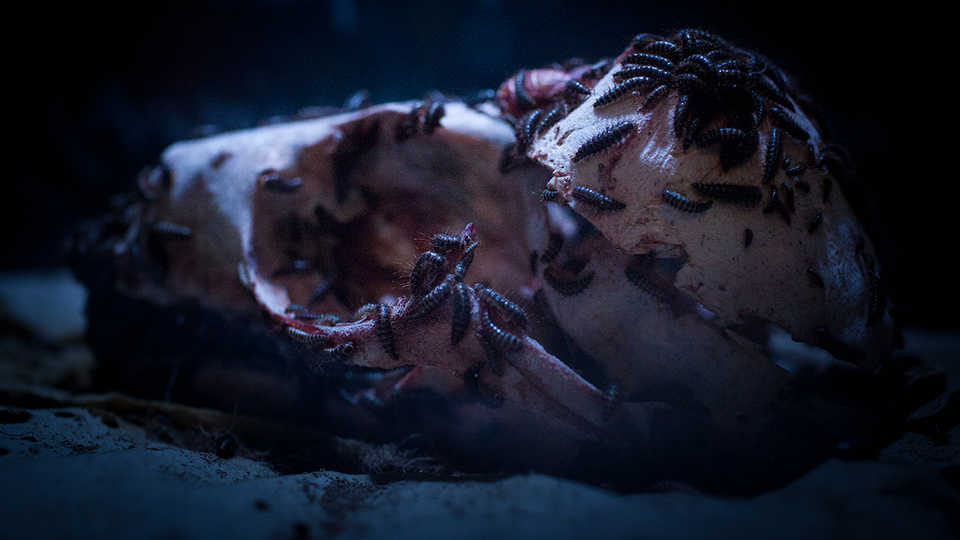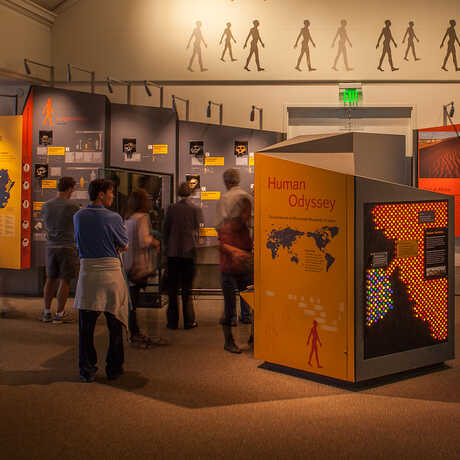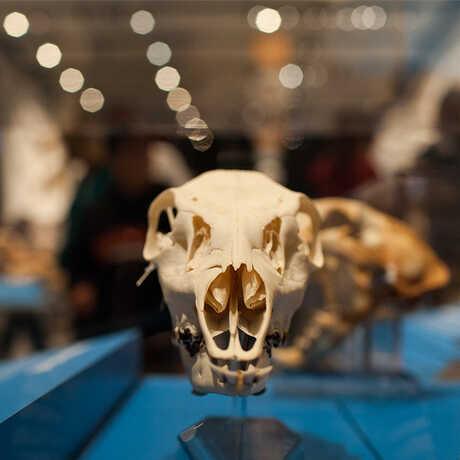Visit an aquarium, planetarium, rainforest, and natural history museum—all under one living roof.

Ever wonder how a dead animal becomes a museum-quality specimen? Carcasses can be buried in the ground or soaked in water, but those are long, slow processes that take weeks or even months. At the Academy, scientists also use dermestid beetle larvae—the smallest stars of Skulls. Peer into one of several windows to watch them munch the dried flesh off animal bones, diligently and delicately transforming skulls into specimens. When these carnivorous larvae are most active—in a dark, warm environment with plenty to eat—they can scour the flesh from a small skull in just three days.
Share This
Academy scientists partnered with Google to image specimens from our research collections using an advanced, automated 3D technique. The results? Jaw-dropping.

For more than 60 years, Academy field associate Raymond Bandar (1927-2017) collected thousands of skulls. In a ten-case display curated by “Bones” Bandar himself, visitors to the Naturalist Center can explore a variety of skulls featuring curious traits and abnormalities.



